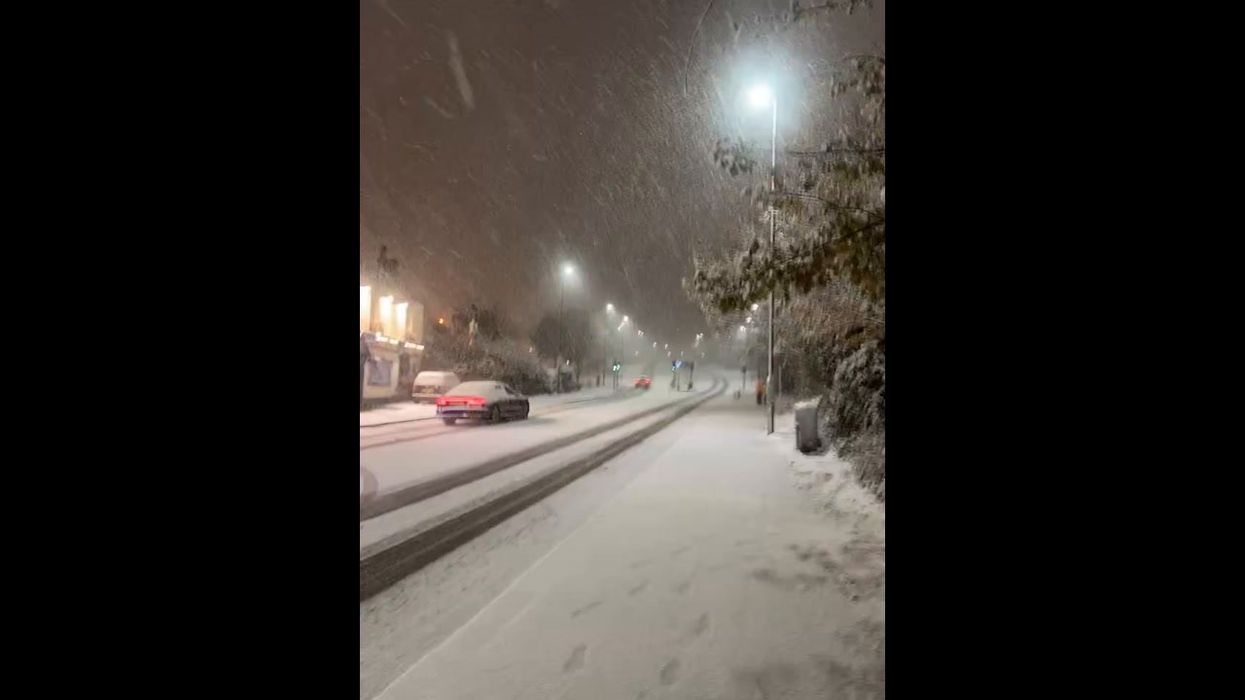Gregory Robinson
Nov 19, 2024
UK: Snow Blankets Much Of Country, Drivers Warned Of Disruptions
StringersHub - Vertical / VideoElephant
You may be more likely to see more snowfall this winter if you live near factories, according to a mind-blowing new study.
As the UK braces for snow this week, chances are you're pondering if it will fall in your area as temperatures plummet.
But there may be another explanation as to why you see so much snow and it depends on where you live.
Researchers at the University of Tartu and the University of Reading and have discovered how industrial pollution can cause liquid clouds to turn into ice clouds when the weather is cold.
This process is known as cloud glaciation and it occurs when tiny air pollution particles trigger cloud drops to change into ice crystals and fall as snow. As part of this process, man-made dust particles from places like metal factories, cement plants, and oil refineries influence clouds by converting cloud droplets to ice crystals at temperatures between -10°C to -24°C.
A single cloud glaciation event can produce up to 15 millimetres of snow to fall across an area that is larger than London.
The research sheds further light on the impact on those who live in factories. It is already understood how living in close proximity takes a toll on air pollution, but there is now evidence that particles from factories can lead to ‘unexpected snowfall’, which can have huge impacts on communities.
‘Cloud glaciation’ may also impact Earth’s climate. When this process happens, the clouds reflect 14 per cent less sunlight back to space, which could lead to more warming.
The clouds that have been changed by dust particles also release 4 per cent more heat from Earth into space. The process also reduces cloud cover by 8 per cent in affected areas.
Professor Nicolas Bellouin, who co-authored the study from the University of Reading, said: “This finding matters a lot for people living near factories and industrial sites.
“We already knew about the health impacts of air pollution, but we now know that factory smoke can turn rain clouds into snow clouds when it's cold enough.
“This can cause unexpected snowfall that other areas don't get. A single event can dump over half an inch of snow across an area bigger than a city. This means communities downwind of factories might need to be better prepared for sudden snow, especially in winter."
The research team studied satellite data and the analysis revealed distinctive ice cloud formations and less cloud coverage in regions downwind of industrial centres across North America, Europe, and Asia. Researchers noticed special ice clouds forming and fewer liquid clouds in areas downwind of these sites.
The findings were published this month in Science.
How to join the indy100's free WhatsApp channel
Sign up to our free indy100 weekly newsletter
Have your say in our news democracy. Click the upvote icon at the top of the page to help raise this article through the indy100 rankings.
Top 100
The Conversation (0)














Italian Prime Minister can't get away from Trump quick enough